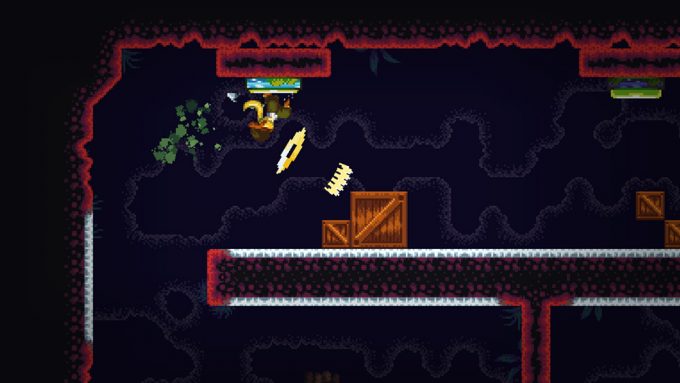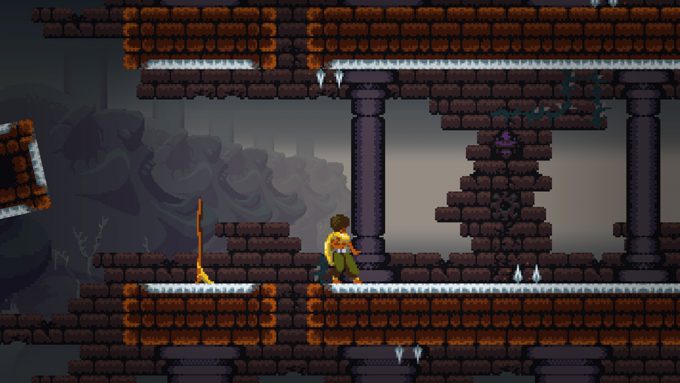Dandara is going to be a stellar game to speed run.
During PAX East this past weekend, Long Hat House was showing off the latest build of the game, now announced for the Nintendo Switch. Dandara is the title character, and we control her as she explores a world of caverns, towns, and space laboratories looking to solve the mystery of what happened to the denizens. It’s not a wildly unique story, and the developers explain as much. They’re not writers, and they’d much rather put their efforts on crafting the gameplay and puzzles rather than a complex plot.
The hook of the experience is movement; Dandara zips around from surface to surface by launching herself towards specified areas indicated by a lighter color than the surrounding environment. There is no walking forward or back, no jumping, no crouching — just gravity switching. By shifting the launch angle (indicated by an on-screen directional line) she can reach different points. This takes a little getting used to, as flicking the analog stick in a specific direction requires practice. Thankfully, Long Hat House has implemented an angle mirroring mechanism that automatically points us in an opposite position, usually towards another reachable platform.
This allows us to cut down on the time needed to adjust our positioning, which is important when we have enemies and obstacles on the screen at the same time.

Dandara has a single attack at the onset of the game, relying on charging and releasing a blast towards a foe. It works well when in close proximity, and must be aimed similarly to regular gravitational leaps. There are a few types I face in the demo: one walks back and forth, and another launches a fireball at me. A third is a giant door-blocking boss that requires avoiding of a wave of projectiles before clobbering a few times to open the way forward. Dandara is a Metroidvania type of game, in that it requires us to move back and forth through levels, gaining new abilities to open paths forward or pass traps we see earlier. One of those first abilities is handed to us by one of the world’s survivors, a giant woman modeled after Tarsila, a Brazilian goddess, and lets us cross canyons.
Failure is common during my demo time. I find myself missing platforms and accidentally landing on enemies, or unable to move out of an electrified fence. Restarting is normal, and restarting 12 times just to pass one early puzzle is something I have to live with for the rest of my gamer life. I fail so much that even the developers wonder if they’ve handed the Switch’s Joy-Cons to the wrong guy.

But, failure also leads to learning, and before I know it I’m moving quickly through levels and flying across the platforms. It’s a natural fit for the Switch, allowing for gamepad use when docked and touch screen controls when in handheld mode. I reckon that the game could end up popular during speedrunning streams like AGDQ or during Extralife and Child’s Play. We’ll find out soon enough, as the game is scheduled to launch later this year.

![[PAX East] Switched on to gravity with Dandara](https://www.sidequesting.com/wp-content/uploads/dandara-White-on-Black-1.png)

No Comments